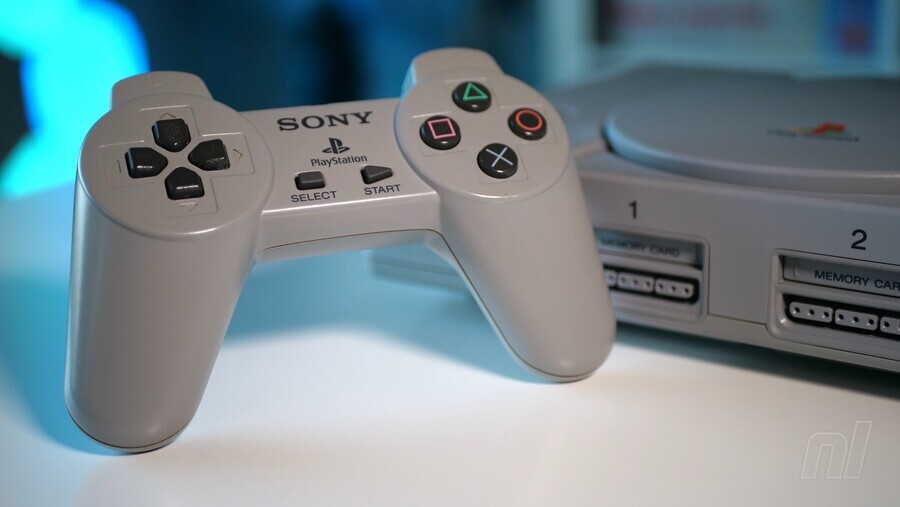
When you consider the sheer volume of games released every year, it should come as no massive shock to learn that a staggering number of projects get shelved or canned before making it to market, and each and every one of these games has a tale to tell.
The story behind an unnamed PlayStation RTS title from the late '90s is especially interesting, as it involved Nintendo indirectly funding the development of what could have been a groundbreaking release on a rival console.
Speaking to John Szczepaniak part of his Untold History of Japanese Game Developers project, Agatsuma's Yasuo Nakajima speaks of a game in development at Aquamarine, the company he joined after leaving Fuurai no Shiren / Shiren the Wanderer studio Chunsoft:
The title was never decided. The CEO kept everything in this head, so we didn't have an official title. Basically, it was going to be a science-fiction RTS for the PlayStation, the PS1. But the money situation was unusual. Development was being funded by a company called Marigul Management, which was a joint venture between Nintendo and Recruit Co.
Marigul's aim was to generate cash to support the production of original IP on Nintendo systems, and between its inception in 1996 and closure in 2003 it is reputed to have help fund games like Custom Robo, Doshin the Giant and Hey, You! Pikachu. The company wasn't directly involved with development, but rather passed on the cash to a group of affiliated development partners, including Param, Noise, Clever Trick, Ambrella and Saru Brunei.
Nakajima admits that he's not sure if Nintendo was actually aware that Marigul was using its capital to fund the development of PlayStation games, but business pressures meant that the company had to expand its remit:
I believe Nintendo's objective was expanding software support for the N64, which was their platform at the time. But Marigul Management was seeing an industry-wide decline in new consumer titles, so they were looking beyond platform boundaries and investing in PlayStation titles as well.
The RTS may not have had a name, but it was incredibly ambitious, with the aim of having 3,000 different units on-screen and moving in real-time. Nakajima states that achieving this technical feat is what enabled the team to secure funding from Marigul to continue with development, but the title was sadly never finished:
Our game would have been just like a modern RTS, with everything on a single map. Do you know the game Total Annihilation? It was similar to that, with a similar science-fiction setting. So we were working on a game like that prior to Total Annihilation, but unfortunately we weren't able to complete it.
As ever, we highly recommend you pick up Szczepaniak's book if you find this story interesting - it's packed with similar tales from the past few decades of Japanese game development.
This article was originally published by nintendolife.com on Thu 12th November, 2015.






Comments 13
Nintendo funding a playstation game, Microsoft publishing a game on Nintendo platforms; this is a strange world we live in
@C-Olimar Add to that Sony publishing games on Microsoft Windows...
What a world.
That's interesting...Imagine if stuff like that was acceptable, we could get nintendo games on PS4, Xbox games on Wii, The last Guardian on Wii U and so on...And I wouldn't need to buy a whole new console just for the Last Guardian.
Speaking of playstation, I've been hunting for a ps2 for a bit and can't find one. Local shops don't have working ones. One shop has two broken ones and that's it. I don't want to turn to ebay but I might have to. Bummer. I wish I had a ps2 from way back when. Sucks to want to get into older consoles this late in the game...I can't find squat locally. Buying used stuff online is risky.
Side note... I loved Doshin the Giant! Wish I didn't sell all my GC games back in the day (life of a poor gamer!)
@TheWPCTraveler @C-Olimar What a time to be alive!
RTS is what? real time strategy or something?
@Crimzonlogic My mate just gave me his ps2 because mine recently died. There are lots out there still, just wish you were as lucky as me. Happy hunting
@ouroborous Or maybe Rhythmic Time Sphere. Possibly Rotund Trajectory System. But you're probably closer with your guess.
@Crimzonlogic if your in England, cex sell them still!!
So, would Nintendo have profited from the game had it me to market?
@Crimzonlogic As far as I'm concerned, Lukie Games is one of the best bets you can make on scoring anything related to older systems and games. You can order directly from the site or call/email them first if you want to know a bit more. I've bought several articles from them the last couple of years and I'm very satisfied with their service, the quality of the refurbished products and the speed of delivery.
Here's the site: http://www.lukiegames.com
I've checked and they still have several PS2's available.
Good luck!
@ULTRA-64 She's in the States. A simple profile check would have told you that...
@Crimzonlogic
Thrift stores have them ALL the time
Show Comments
Leave A Comment
Hold on there, you need to login to post a comment...